Climate & Environment
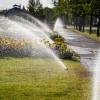 It’s widely recognized that reducing lawn irrigation is essential for water conservation, particularly in water-scarce regions such as the Western U.S. Aditi Bhaskar is studying a lesser-known consequence of irrigation efficiency.
It’s widely recognized that reducing lawn irrigation is essential for water conservation, particularly in water-scarce regions such as the Western U.S. Aditi Bhaskar is studying a lesser-known consequence of irrigation efficiency. In July 1879, the USS Jeannette left port in San Francisco en route to the North Pole. What lay at the top of the world was still shrouded in mystery. Was it a warm inland sea, a sheet of ice or open ocean? The crew set out to discover.
In July 1879, the USS Jeannette left port in San Francisco en route to the North Pole. What lay at the top of the world was still shrouded in mystery. Was it a warm inland sea, a sheet of ice or open ocean? The crew set out to discover. During a Colorado summer, you’ll likely spot vibrant yellow sunflowers growing wherever they can. In the state’s dry, nutrient-deficient soil, CU Boulder researchers and others aim to learn if the crop can survive and even thrive in a hotter, drier future.
During a Colorado summer, you’ll likely spot vibrant yellow sunflowers growing wherever they can. In the state’s dry, nutrient-deficient soil, CU Boulder researchers and others aim to learn if the crop can survive and even thrive in a hotter, drier future.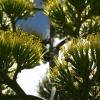 Thirty years after the late linguistics professor Allan Taylor planted two rare agave plants outside a CU Boulder greenhouse, his legacy is sporting a once-in-a lifetime burst of color.
Thirty years after the late linguistics professor Allan Taylor planted two rare agave plants outside a CU Boulder greenhouse, his legacy is sporting a once-in-a lifetime burst of color.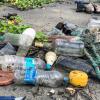 Every year, consumers in the United States produce millions of tons of plastic waste, and most of it winds up in landfills. New research from chemists at CU Boulder takes a first step toward making all that trash vanish.
Every year, consumers in the United States produce millions of tons of plastic waste, and most of it winds up in landfills. New research from chemists at CU Boulder takes a first step toward making all that trash vanish. After the week-long Polar Postdoc Leadership Workshop, led by the Polar Science Early Career Community Office, participants not only grew their skills and knowledge—they bonded over a shared vision to make the polar sciences more inclusive and welcoming and identified how they can support and lead their vision.
After the week-long Polar Postdoc Leadership Workshop, led by the Polar Science Early Career Community Office, participants not only grew their skills and knowledge—they bonded over a shared vision to make the polar sciences more inclusive and welcoming and identified how they can support and lead their vision.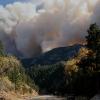 With the Fourth of July approaching and a thick green carpet of fuel covering much of the West after a rainy spring, CU Boulder fire ecologist Jennifer Balch is calling on people to do their part to prevent the next megafire.
With the Fourth of July approaching and a thick green carpet of fuel covering much of the West after a rainy spring, CU Boulder fire ecologist Jennifer Balch is calling on people to do their part to prevent the next megafire. Antarctic ice shelves have experienced only minor changes in surface melt rates over the past four decades, unlike the rapid increase in surface melt experienced by Greenland’s glaciers during the same time period, according to new CU-led research.
Antarctic ice shelves have experienced only minor changes in surface melt rates over the past four decades, unlike the rapid increase in surface melt experienced by Greenland’s glaciers during the same time period, according to new CU-led research.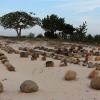 In her latest research, Brianne Cohen, a contemporary art history professor, examines the intersection of art and environmental activism.
In her latest research, Brianne Cohen, a contemporary art history professor, examines the intersection of art and environmental activism. One professor decided it was time to get her doctoral students in environmental science real-life experience by taking them on a four-day field trip to a remote research station up high in Colorado’s mountains.
One professor decided it was time to get her doctoral students in environmental science real-life experience by taking them on a four-day field trip to a remote research station up high in Colorado’s mountains.


